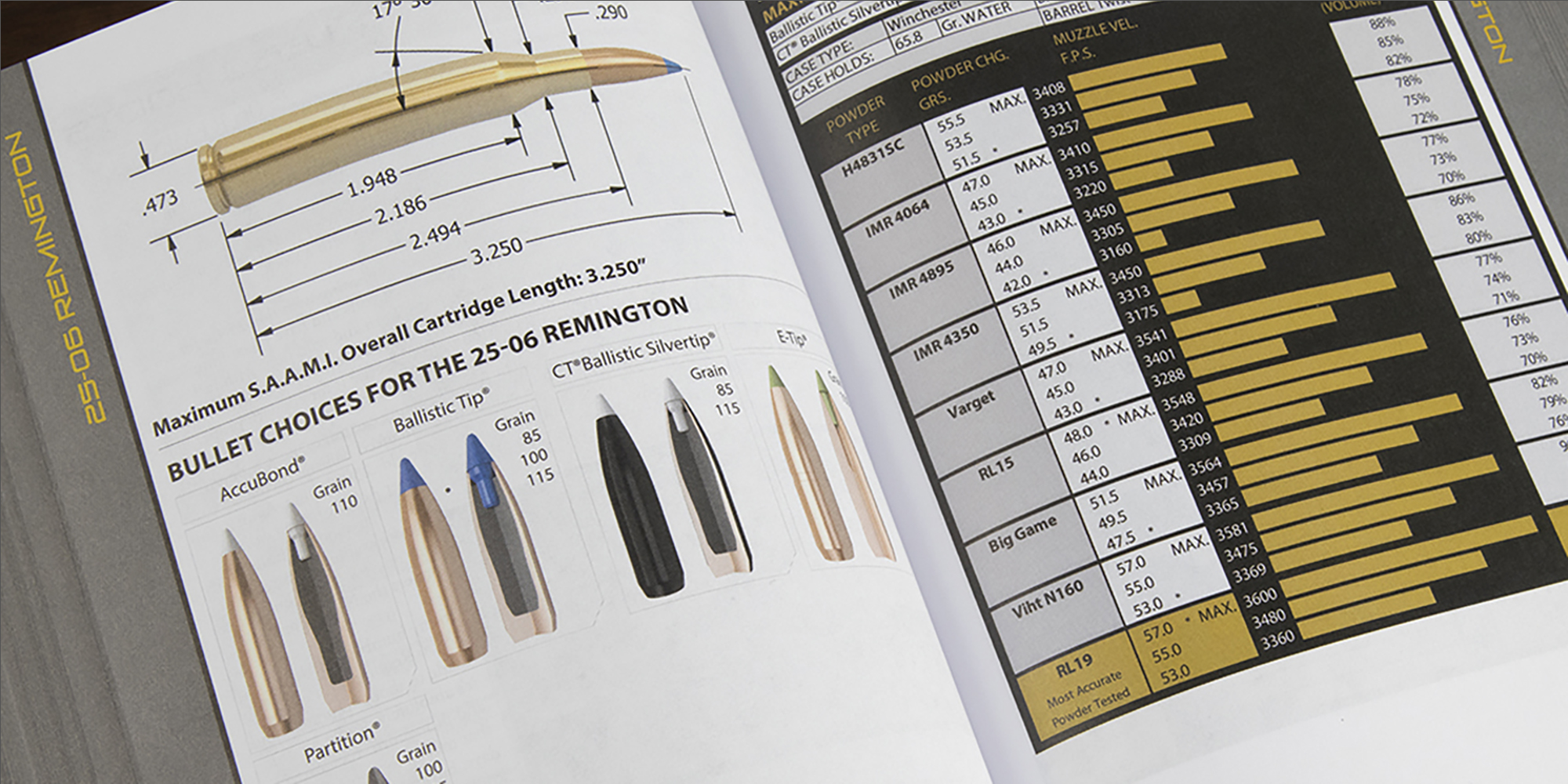Using a Reloading Manual

An up-to-date and accurate reloading manual is probably the most important tool in the arsenal of a handloader. Reloading manuals provide all of the recipes and technical specifications for ammunition cartridges. These manuals are updated every couple of years with new cartridges, components, and powder recipes. Typically, new reloaders will purchase an initial handbook and acquire the subsequent versions as new information voids their previous edition.
Some popular reloading manuals are available from Hornady, Sierra, Nosler, and Speer. All of these companies provide fantastic, accurate data in their manuals that is trusted by handloaders around the world.
There are a few considerations to make when using a reloading manual. Most importantly, environmental changes can fairly significantly impact the result of any testing done by a reloading manual’s manufacturer.
For example, temperature. You may find that the data in a given reloading handbook was tested at a temperature of 70 degrees Fahrenheit. Take this into account before testing your rounds against the results in the book. If you are in a warmer environment, you may see an increase in pressure and velocity. Conversely, lower temperatures can create lower pressures and velocities.
Reloading handbooks will also detail the specifications for the firearm from which a given round was tested. This will typically consist of action, barrel length, and twist rate.
Also, be sure to pay attention to the primer listed in the manual. Most of the time, you can expect manual developers to use standard primers. But with slow-burning powders and larger cases, a magnum primer may be used.
Standard Information
Load manuals are usually organized by cartridge. Each cartridge section will likely contain some brief history about the round -- this may include its date of development, original purpose, or suggested use. Some manuals may also rank which loads performed the most accurately in the test firearm used during development.
Each cartridge listed will also have a selection of bullets that are appropriate for use. Bullets are often listed from lightest to heaviest. Depending on the twist rate of your firearm’s barrel, some of the listed bullets may not apply or produce the same results. Regardless, this is a good place to get some general information about each bullet.
Loading manuals will also include cartridge dimensions, which are extremely useful when comparing cartridges against one another. You will typically find the maximum case length, which is an important measurement dictating the longest a case should be before trimming. The trim length will also be listed, which is the recommended length that your cases should be trimmed to. Both of these figures are very important -- disregarding these can lead to extreme pressure, which could damage your firearm.
Specific Data
You will also find more detailed data in a reloading manual. One piece of information of which you should take note is the data for the given style of bullet. Many novice reloaders may find data for a given weight of a bullet from a certain brand, and wonder if they can use that same data for a different brand of the same bullet weight. If the bullets are the same style, it is typically acceptable to use the same data. But if the bullets are of a different style, it is advisable to reduce your load slightly. Ideally, reloaders will start with a reduced charge and gradually work up to a new load when handloading a new bullet. This will give the user an opportunity to check for signs of excessive pressure.
In a reloading handbook, you can expect to find the various powders tested by the authors for a specific bullet. You will also find increasing velocities, with the amount of powder in grains listed underneath the respective velocities. Manuals may highlight the maximum loads, and also provide warnings to exercise caution when using full loads in your rounds. The conditions under which the manual was developed are very specific and include the type of rifle, primers, and ambient temperature.
In reloading handbooks, you will also find other important data like overall length, sectional density, and ballistic coefficient. Cartridge overall length is the measurement from the base of a case to the tip of a bullet, and is obtained from SAAMI (Sporting Arms and Ammunition Manufacturer’s Institute). This piece of data is especially useful when loading for use in magazine fed rifles.
The sectional density is a measure of the bullet that consists of weight expressed with respect to the square of the bullet’s diameter. High sectional density often means a bullet will maintain velocity and energy more efficiently.
Lastly, the ballistic coefficient represents how a bullet decelerates while in flight. It is typically expressed as “B.C.” It is used to reference how well (or poorly) a bullet can overcome air resistance after being fired. They are handy baseline comparisons for bullets, but should not be looked at as a ‘tell-all’ for a bullet’s inherent quality. This coefficient is liable to change with velocity, altitude, temperature, or other environmental and atmospheric conditions. It is most useful when calculating wind drift and bullet trajectory.